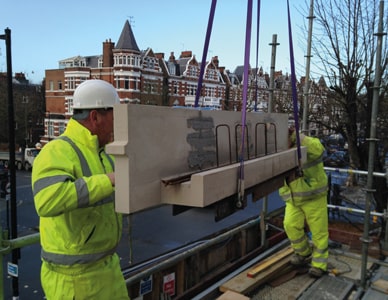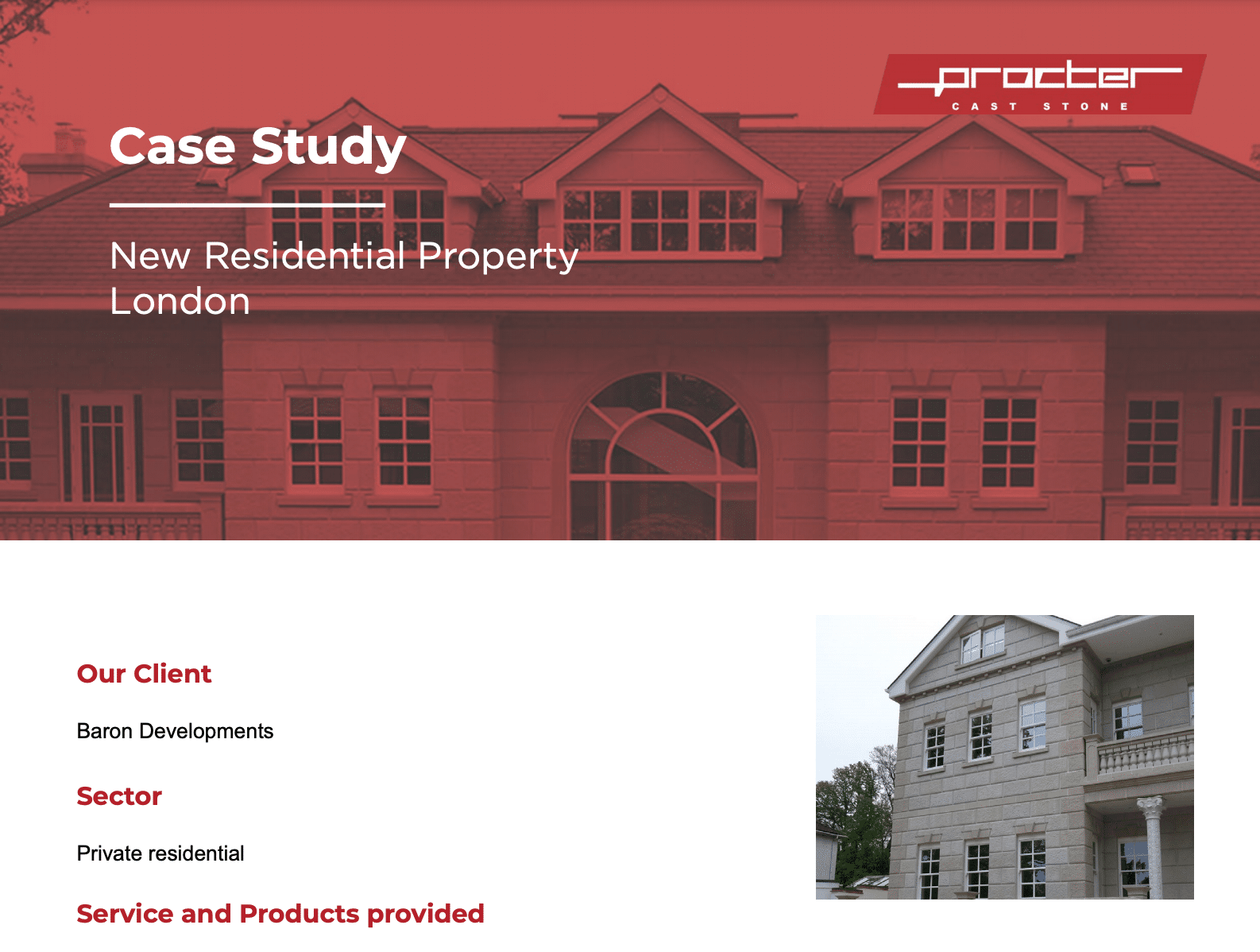How Prestigious Properties can Benefit from Cast Stone
Stone has traditionally been used to add character and style to prestigious properties, but today architects are using cast stone instead, achieving the same or better visual impact and with the added benefits of lower cost and reduced project risk.
Apart from size and location, the main characteristics that typically make a house stand out as a prestige development are features such as stone columns, heads, keystones, cills, door and window surrounds, bullseyes, balustrades, canopies, porticos, arches and steps. Traditionally these would all be bespoke items produced from natural quarried stone, but cast stone offers a number of advantages.
As well as being very cost-effective – especially where repetitive work is concerned – cast stone is also extremely versatile, giving architects a level of design freedom that they do not enjoy when working with natural stone. Almost any three-dimensional form can be manufactured, and cast stone is available in a wide variety of shades to mimic natural stone – or custom colours can be produced to order. Architects also have a choice in the surface finish and texture that they specify, safe in the knowledge that cast stone weathers in the same way as natural stone.
Keeping construction projects on schedule is always a challenge, and one of the advantages of cast stone over natural stone is that project risk is reduced. Because cast stone is manufactured in closely controlled factory conditions, it is not subject to delays in supply, meaning that quoted delivery times can be relied upon, and lead times are usually shorter than for natural stone. Furthermore, should a cast stone unit be damaged during installation, it can either be repaired or a substitute manufactured in a relatively short time.
Depending on the client’s and architect’s requirements, cast stone units can be selected from catalogues or manufactured to drawings. While the former option is usually the lowest cost, custom units can be manufactured very economically to an architect’s hand-drawn or CAD designs. If a client sees a feature on another building and wants something similar, the architect and supplier can easily work together to create it in cast stone.
Throughout the UK there are a number of suppliers of cast stone, but architects and specifiers need to be aware that not all produce high-quality work suitable for prestigious projects. Procter Cast stone is part of Procter Bros, a family-owned business that was established in 1740. Like all the divisions within Procter Bros, Procter Cast stone puts a great emphasis on high product quality and outstanding customer service.
Technical staff provide free consultations to assist in the selection and design of all cast stone features. Early involvement in project planning ensures the successful incorporation of the features to suit aesthetic, performance and budgetary parameters, and deliveries are scheduled to suit site programme requirements. When bespoke units are required, CAD drawings are prepared and submitted to the client for approval. Accurate production moulds are then manufactured and the cast stone units produced from these.
All Procter Cast Stone products are subject to final inspections, carefully packed, protected and shrink-wrapped on pallets. Deliveries are made using Procter’s own vehicles to ensure they arrive in first-class condition.
To assist in the process of specifying cast stone products, Procter Cast Stone has published Understanding Cast Stone – A Guide to Cast Stone Products for Architects and Specifiers. This is available as a PDF file free of charge by emailing info@proctercaststone.co.uk or directly from the Downloads section of the website.



